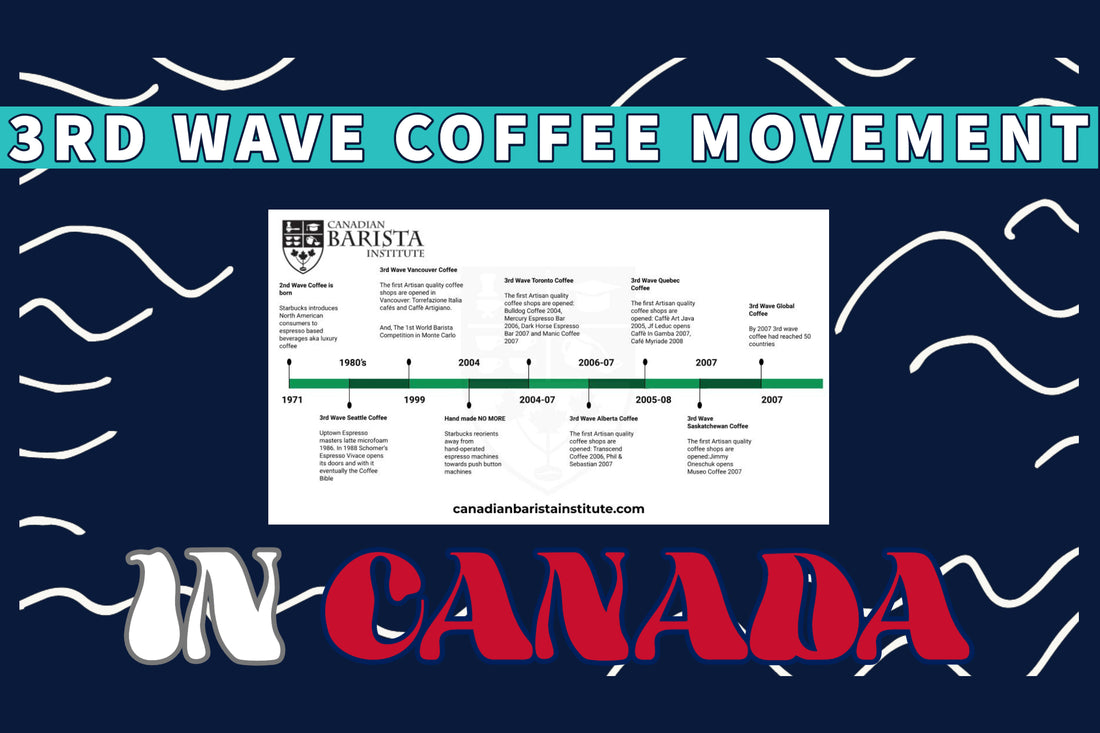Defining Third Wave Coffee Movement and Documenting its Origins in Canada
The third wave coffee movement is an approach to coffee that is obsessed with quality and freshness. It started in Canada during the late 1990s inspired by the 1980s coffee scene in Seattle. It really took hold when Starbucks decided, in 2004, to replace traditional, hand-operated, manual machines with push button, super-automatic machines.
Starbucks had a hyper-aggressive expansion plan in its sights in 2004, but in order to pull it off they needed to ensure that consistency, efficiency and speed of service could be maintained between stores.
To accomplish this feat they made the bold move of switching from hand-operated, manual La Marzocco Linea espresso machines to push button, super-automatic Mastrena espresso machines which they still use today.1
With these new fangled machines the operator never had to touch the coffee, everything was performed automatically by the machine and the integrated grinder unit.
Management at Starbucks believed that switching to the new push-button machines would simplify the espresso-making process.
No longer would baristas be required to grind the coffee beans into the portafilter, tamp them down, lock the ground beans into the machine or start the water. The super-automatic, push-button machine allowed the barista to do all this with a single touch of a button. Even worse, frequent daily flavour changes made by the barista were eliminated; key variables such as temperature, dose pressure and shot length were left to a technician to handle, who would only show up once or twice a month.
A change that started a movement
Starbucks had gained the consistency and efficiency they wanted but it came at a cost.
True coffee aficionados believed, and still do today, that the hand-operated, manual machine, with removable portafilter and a non-integrated grinder, coupled with proper training, produced a better quality espresso than the push button machine.
Secondly, baristas who took pride in the skill and art of their craft were literally reduced to button pushers. In fact some coffee critics coined the term “Person Behind the Counter” (PBTC) to describe what had become of the barista.
Coffee enthusiasts were unhappy. Baristas were unhappy. There was unrest in the air. It was the spark that helped ignite a coffee rebellion in the Pacific Northwest which was later coined the “third wave coffee movement”. In Canada, the movement first took hold in Vancouver with the 1999 opening of two Torrefazione Italia cafés (a Seattle-based company) and the first Caffè Artigiano just a few short months later.
Coffee aficionados take action
Customers that Starbucks had turned on to high-quality coffee were now disappointed and as a result they started seeking out the coffee experience they had lost by trying other establishments.
“At the time Starbucks was ‘the place’ to get a coffee,” recalls Les Kuan, instructor at the Canadian Barista Institute and long-time coffee enthusiast. “They were hand making it. It tasted better than you could get at a Tim Hortons or Coffee Time. When Starbucks switched to those push-button machines there was a tangible taste difference. The quality dropped. It left a vacuum.”
Then there were the baristas. Their artisanship was no longer required, many of them left Starbucks to work for independent specialty coffee shops or open up their own cafés.
Matthew Lee, instructor at the Canadian Barista Institute and former barista and owner of Manic Coffee in Toronto, recalls the early days of the movement.
“Starbucks made their shift away from the hand-operated, manual machine to the push button machine and all of a sudden the market in the Pacific Northwest got flooded with all these used, hand-operated, manual La Marzocco machines.”
Many of them were purchased by rebellious, ex-Starbucks baristas In Vancouver.
“It was like, if you take away our tools and make us push a button, not only are we going to use the old equipment you guys didn’t want that we made coffee manually from, we’re going to roast the coffee, source it for ourselves and make it fresh,” states Matthew Lee.
In other words, they were going to provide the type of coffee experience Starbucks used to deliver but make it even better and fresher.
Three other factors that fueled the movement
It wasn’t just the coffee that was drawing people to third wave cafés.
“One thing that happened a lot with coffee shops in Canada was they became the ‘third space’,” says Matthew Lee. “They weren’t ‘at home’ or ‘work or school’, they became ‘the place’ you hung out at. It was very hip to be at a café. They were tied to the independent music scene, organic food, fresh pastries and fresh ethical coffee. They were something Starbucks couldn’t mimic.”
Another thing that made the third wave café unique from Starbucks was latte art.
David Schomer, espresso expert and owner of the famed Espresso Vivace café in Seattle, Washington is credited with popularizing latte art in North America but he wasn’t the first to perfect the latte microfoam texture that is indicative of third wave. That distinction belonged to Uptown barista Amy Vanderbeck and Jack Kelly, the owner of Uptown Espresso who mastered latte microfoam back in 1986. David Schomer was so taken by latte microfoam creations that he sent his entire Espresso Vivace staff on a field trip to Uptown Espresso to experience it for themselves.
After that field trip the microfoam and latte art pouring experimentation began at Espresso Vivace led by two very talented baristas: Sarah Hunting and Lisa Parsons. In 1989, Sarah was first to pour a ‘B’ shape. Lisa followed that up by pouring a perfect latte heart.
To learn more about extraction and latte art, David Schomer travelled to Italy. Upon returning home, Schomer spent six months practicing latte art, including perfecting the heart shape, the pitcher-shaking technique used for creating lines in the design which he saw in Caffe Bar Del Domm, and the Rosetta pattern after seeing it captured in a photograph taken at Italy’s Caffe Mateki in 1992. These designs and the techniques required to execute them would go on to influence Schomer’s coffee shop staff and barista classes.
Schomer’s passion and fascination for latte art inspired him to write columns about it in Café Ola magazine. In 1996 he published a book titled, Espresso Coffee: professional techniques, which became known as the ‘third wave bible’. Schomer’s synthesis of all things coffee, willingness to freely share hard-earned insider knowledge, coupled with his innovative techniques and ideas expressed in his book still pervade the minds of baristas today.
Word spread about this impressive latte art form but it took some time before it appeared in the Canadian marketplace.
“In 2003 latte art was only happening at Caffè Artigiano in Vancouver, and in 2004 Stuart Ross’s Bulldog Coffee was the only place in Toronto doing latte art,” remembers Matthew Lee. “In 2006, former Bulldog barista Matthew Taylor opened Mercury Espresso Bar and in 2007 Ed Lynds, another ex-Bulldog guy, opened Dark Horse Espresso Bar. So in 2007 it was just those three shops in the whole city of Toronto that were creating latte art.”
Make no mistake though, latte art is not the most important of the three additional factors that contributed to the rise of the third wave coffee movement. Any high skilled barista can pour latte art into a cup of Nescafe. The biggest difference that separates the 3rd wave coffee movement from the 1st and 2nd waves is the freshness of the roasted coffee bean. The 3rd wave movement only uses coffees that are 3 to 14 days old from roast for espresso; anything beyond that date is considered stale.
Canadian cafés influence the 3rd wave movement around the world
By 2007 the third wave coffee movement had reached all corners of the planet.
“It was like a tsunami sweeping the globe,” remembers Les Kuan. “It went from zero to 50 countries in a very short time. Every major city had their version of a Manic Coffee or a Caffè Artigiano i.e. using fresh 3-14 day old coffee and pouring latte art.
Vancouver, because of its close proximity to Seattle, became one of the third wave coffee meccas. International coffee travellers to Seattle often took the short drive north to visit Vancouver shops, especially Caffè Artigiano.
“Coffee geeks and entrepreneurs from Japan, Korea, Europe and more sat in Caffè Artigiano trying to figure out how this café was doing high-quality coffee, prepared fresh, but still managing to maintain speed of service,” says Les Kuan. “Not to mention how they were outselling Starbucks, in some cases, too.”
In one particular global market, the third wave coffee movement was so strong that the behemoth Starbucks was unable to make headway. “Starbucks tried to expand into Australia when there was already an established third wave coffee movement. They couldn’t crack it. They had to retreat,” recalls Les Kuan. “Starbucks lost millions trying to penetrate it. They found out firsthand that when there’s an organized, pre-established movement of artisan coffee, it’s really hard to get the Starbucks message through.”
Were you a part of, or a supporter of, the third wave coffee movement in Canada?
Feel free to add your insights, thoughts and perspectives to this post. We would love to hear from you! This is the timeline for Canada and we will continue to update it when our readers send us corroborated documents. We would like to document 3rd wave in your country. If you would like to volunteer your countries information , we will add it here. You can let us know which cafe was the first to make latte art, which cafe was the first to serve only fresh coffee, what year did your country join the competitions, does your country have your own version of Starbucks - the equivalent to Starbucks, and when did McCafe and Starbucks first open in your country etc,...
Download and share the "Defining Third Wave Coffee Movement and Documenting its Origins in Canada" Image below

1. To simplify we refer to machines with removable portafilters (handles) as “hand-operated manual machines'', this would include all the lever, semi-auto and automatic machines. With the super automatic machines being referred to as “push-button”.



